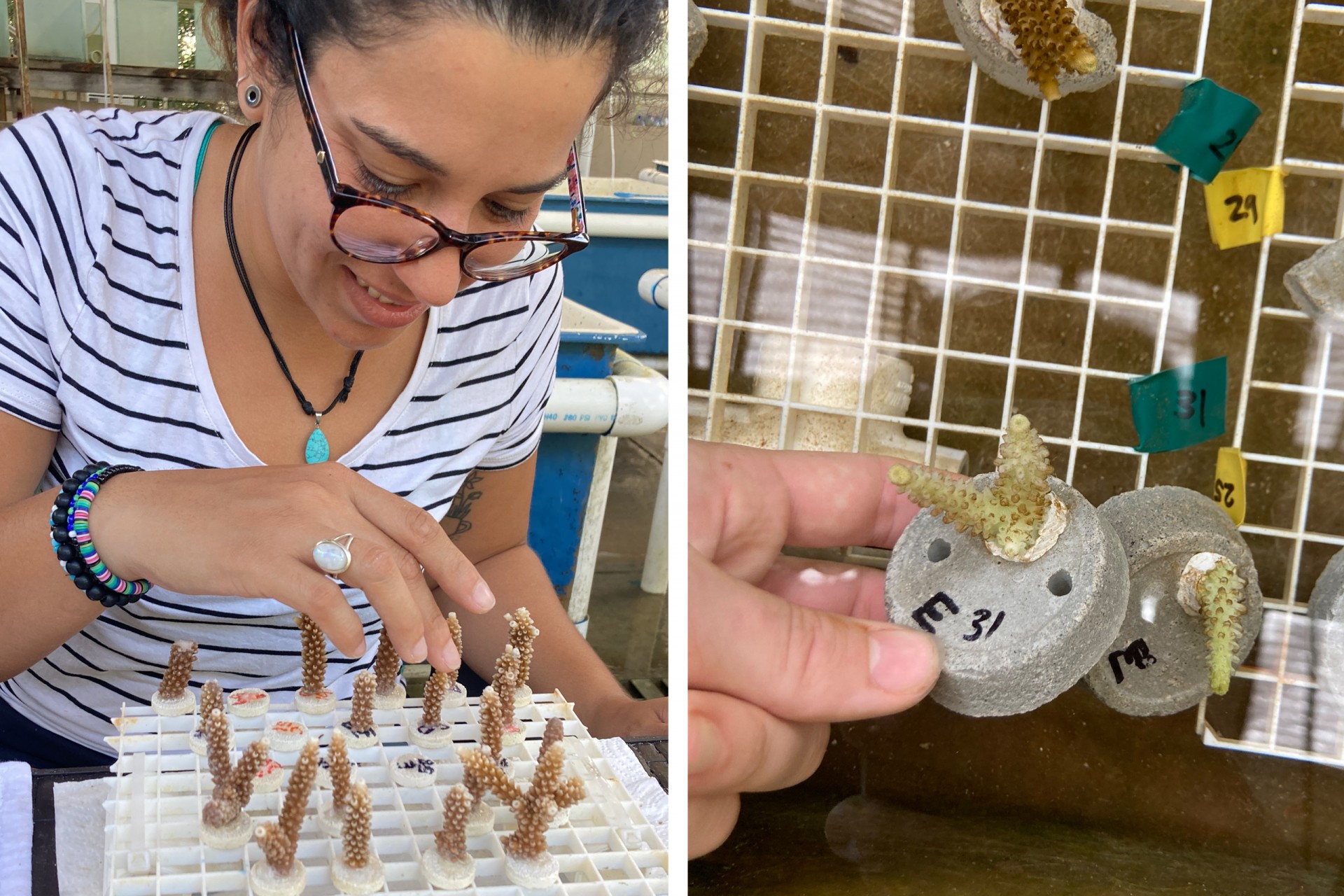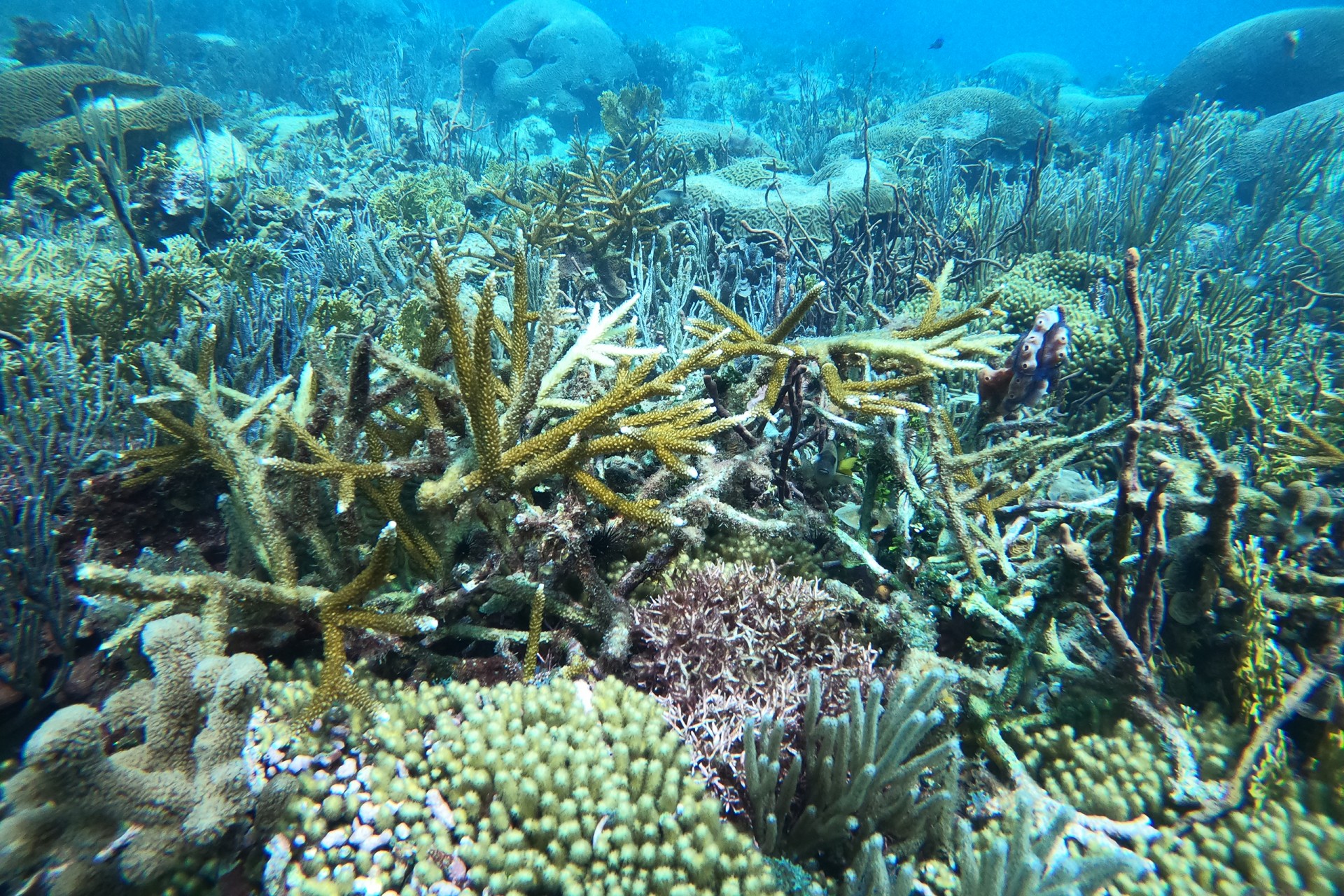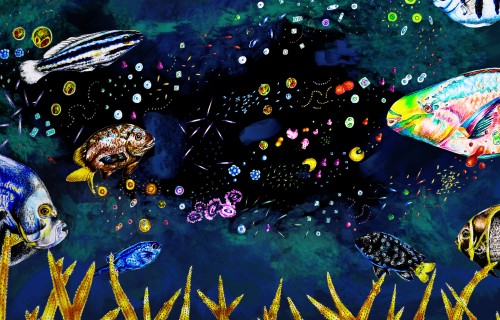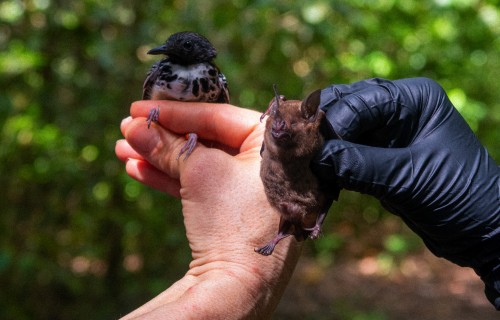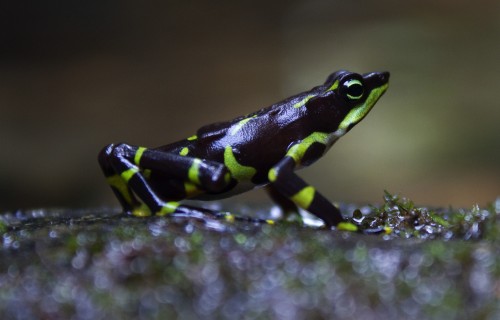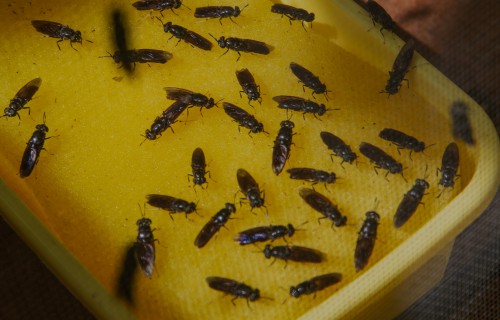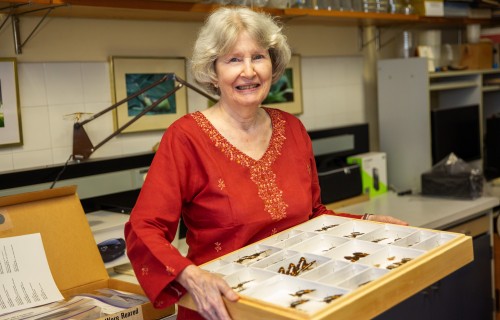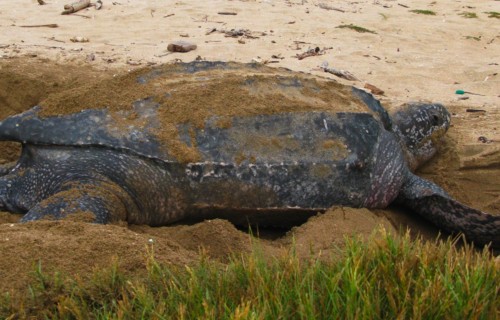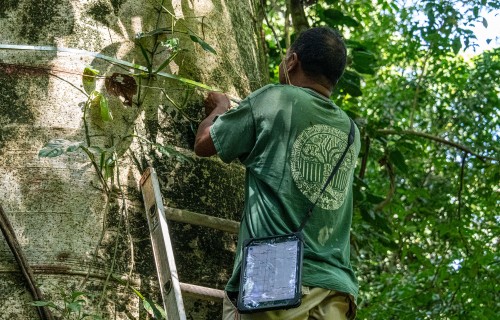Above the tropical forest canopy,
sensors capture the fluxes of gases
between the trees and the atmosphere
Smothering
Biodiversity
Hopeful News for Caribbean Reefs? Low Oxygen May Be More Deadly for Staghorn Corals than High Temperatures
by Beth King
First experimental comparison of the effects of temperature and oxygen deprivation on three key Caribbean coral species shows that nightly low oxygen tips the balance of species survival away from tall, elegant, reef-building corals, towards lower, weedy corals, simplifying coral communities.
Staghorn corals may not endure even one night of low oxygen, according to a new study published in Global Change Biology by scientists working at the Smithsonian Tropical Research Institute (STRI) in Panama. Since the 1970’s giant, branching staghorn corals have given way to lower, weedier coral species across the Caribbean. Lack of oxygen at night may explain why staghorn corals disappeared, resulting in lower biodiversity reefs.
“Previous die-offs of staghorn corals have been blamed on high temperatures and white-band disease,” said Noelle Lucey, associate research scholar at Princeton University’s High Meadows Environmental Institute and former post-doctoral fellow at STRI, “but our study suggests that low oxygen conditions may have been the real culprit.”
Coral reefs are one of Earth’s most biodiverse ecosystems, and like tropical forests, their future is threatened by human population growth, pollution, overextraction of resources and climate change. And, like rainforest trees, the large, branching staghorn corals, once common in the Caribbean, provide habitat for colorful fish, anemones, squids, octopuses and other marine invertebrates—so when they disappear, so do the rest.
But now, in the first experiments to compare the effects of two key stress factors, oxygen deprivation and temperature, on three dominant coral species under laboratory conditions, staghorn corals (Acropora cervicornis), lettuce corals (Agaricia tenuifolia), and finger corals (Porites furcata) each species responded differently.
Next, the team created an indoor experiment to see how corals would respond to different temperatures and oxygen levels. Carolina Cesar, William Brister and Noelle Lucey in the lab.
Credit: Courtesy of Noelle Lucey
The levels of oxygen and temperature chosen for the experiment were based on an initial study of coral communities and their conditions on three reefs in Panama’s Almirante Bay. On the outermost reef, all three coral species were common. On the intermediate reef, staghorn corals were present, but not common, and on the innermost reef, staghorn reefs were not present. The inner reefs were hotter and experienced lower oxygen concentrations at night.
First, researchers compared how each coral species responded to high or low oxygen levels at three different temperatures (25, 28, 31, 34°C). Staghorns were extremely sensitive to a lack of oxygen: even at ambient temperatures common on the reef now (28°C), more than 70% of the corals died, and at all higher temperatures, 100 percent died. Lettuce corals were only affected by low oxygen at the highest temperature, and finger corals were not affected by any of the treatments, they tolerated both high and low temperatures at both high and low oxygen levels.
Carolina Cesar mounting coral pieces for the indoor experiment.
Credit: Courtesy of Noelle Lucey
Next, they compared the cumulative effects of several nights of oxygen deprivation on coral bleaching and mortality. Four nights of low oxygen resulted in more than 50% bleaching for staghorns, almost no effect on the hump corals and intermediate damage to the lettuce corals.
The authors compared these experimental results with field surveys to understand why there are such different reefs throughout Panama’s Almirante Bay. They identified all the different corals species on shallow reefs in the area, and measured how oxygen and temperature have been changing on these reefs during the last two years. After counting the number of hypoxic nights that these individual reefs experienced, and matching them to experimental species’ tolerances, they saw a clear pattern. The reefs with frequent hypoxic events had fewer hypoxia-sensitive species.
Branching corals on Bocas del Toro, Panama reef. Since the 1970’s giant, branching staghorn corals have given way to lower, weedier coral species across the Caribbean. New research suggests that hypoxia, low oxygen levels, may be a better explanation than rising temperatures.
Credit: Carolina Cesar
“We still don’t fully understand what drives changes in coral community composition,” said Noelle Lucey, “but by combining experimental data with environmental timeseries data, we can see how the frequency of low oxygen nights on different reefs reflects which species can live there.”
“Noelle Lucey’s work shows convincingly that hypoxia is the main driver of reef diversity in Bahia Almirante and most likely at other reef sites,” said Rachel Collin, STRI staff scientist and director of the Smithsonian’s laboratory in Bocas del Toro Panama, “this is actually a major source of hope in the sense that it may be easier to control nutrient runoff and other causes of low oxygen than it is to control water temperature.”
The authors thank Plinio Gondola, the STRI Bocas del Toro Research Station staff, and the Panamanian government for permission to conduct this research (Permit #4149). Their work was supported by U.S. National Science Foundation grant BIO-OCE 2048955.
Reference: Noelle M. Lucey, Carolina César-Ávila, Alaina Eckert, Anushka Rajagopalan, William C. Brister, Esme Kline, Andrew H. Altieri, Curtis A. Deutsch, Rachel Collin. 2024 Coral Community Composition Linked to Hypoxia Exposure Wiley Online Library. doi.org/10.1111/gcb.17545




